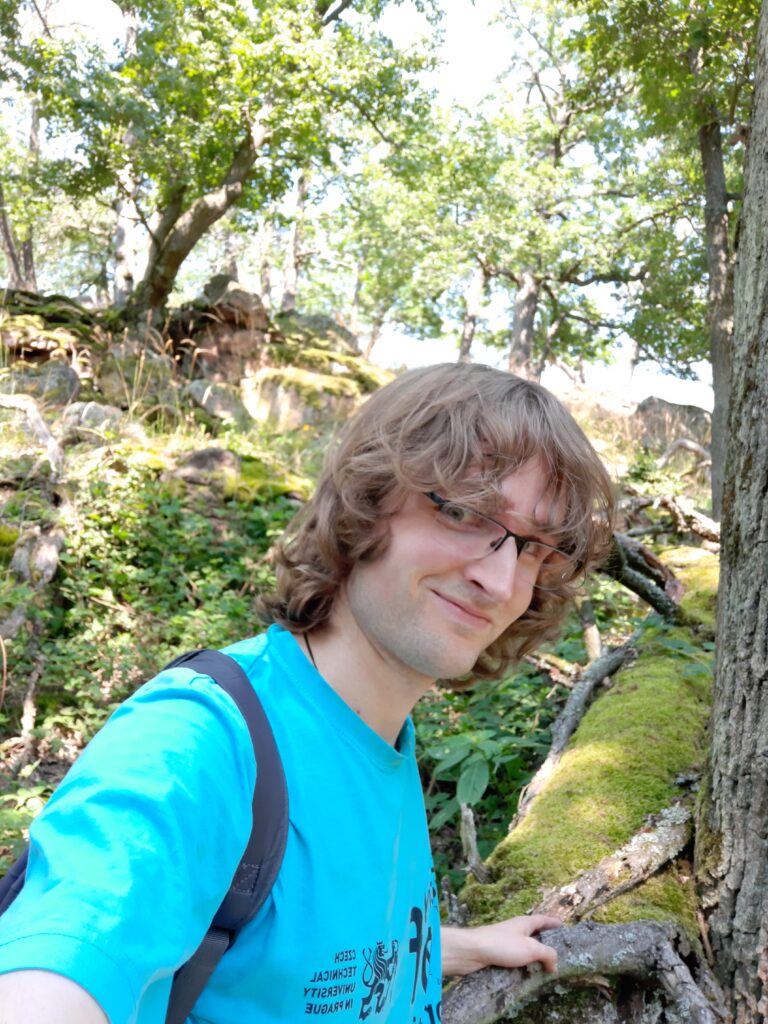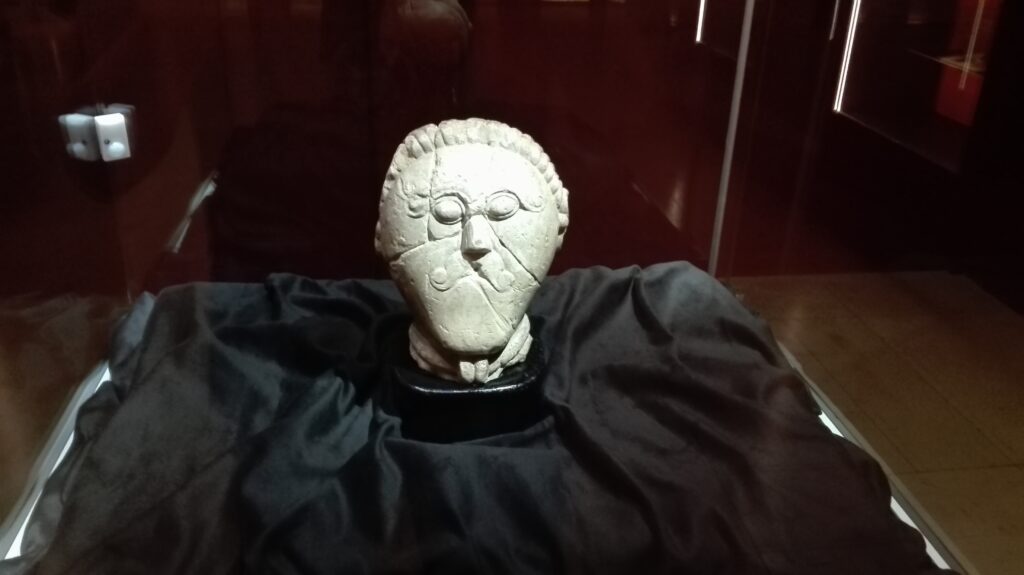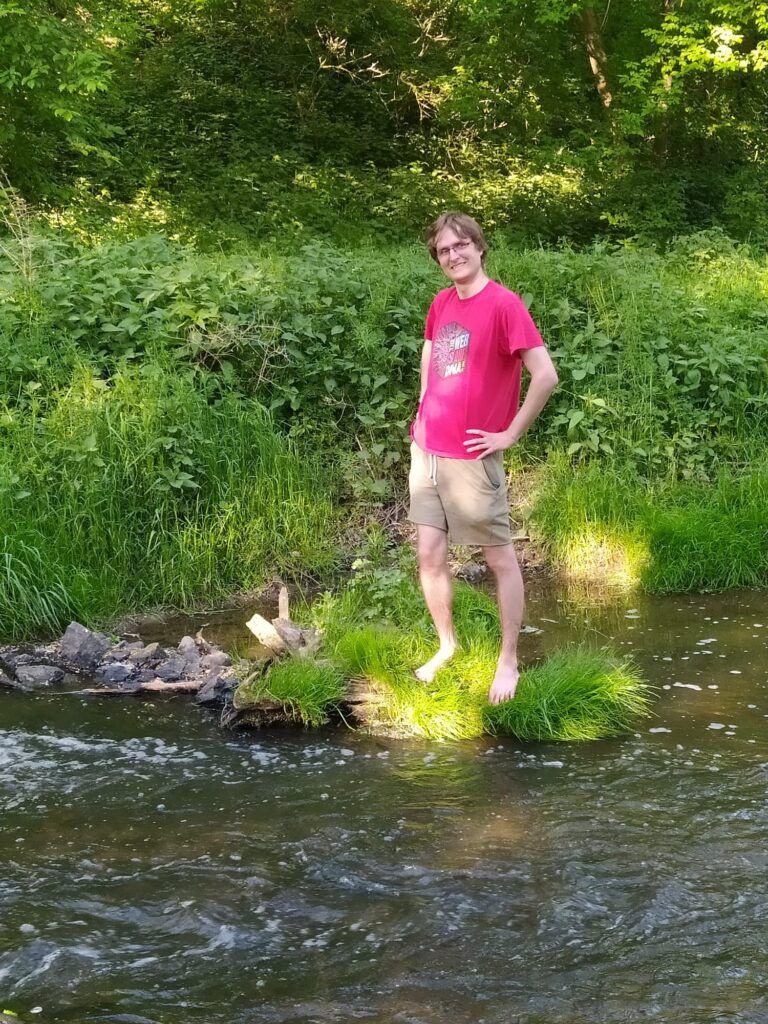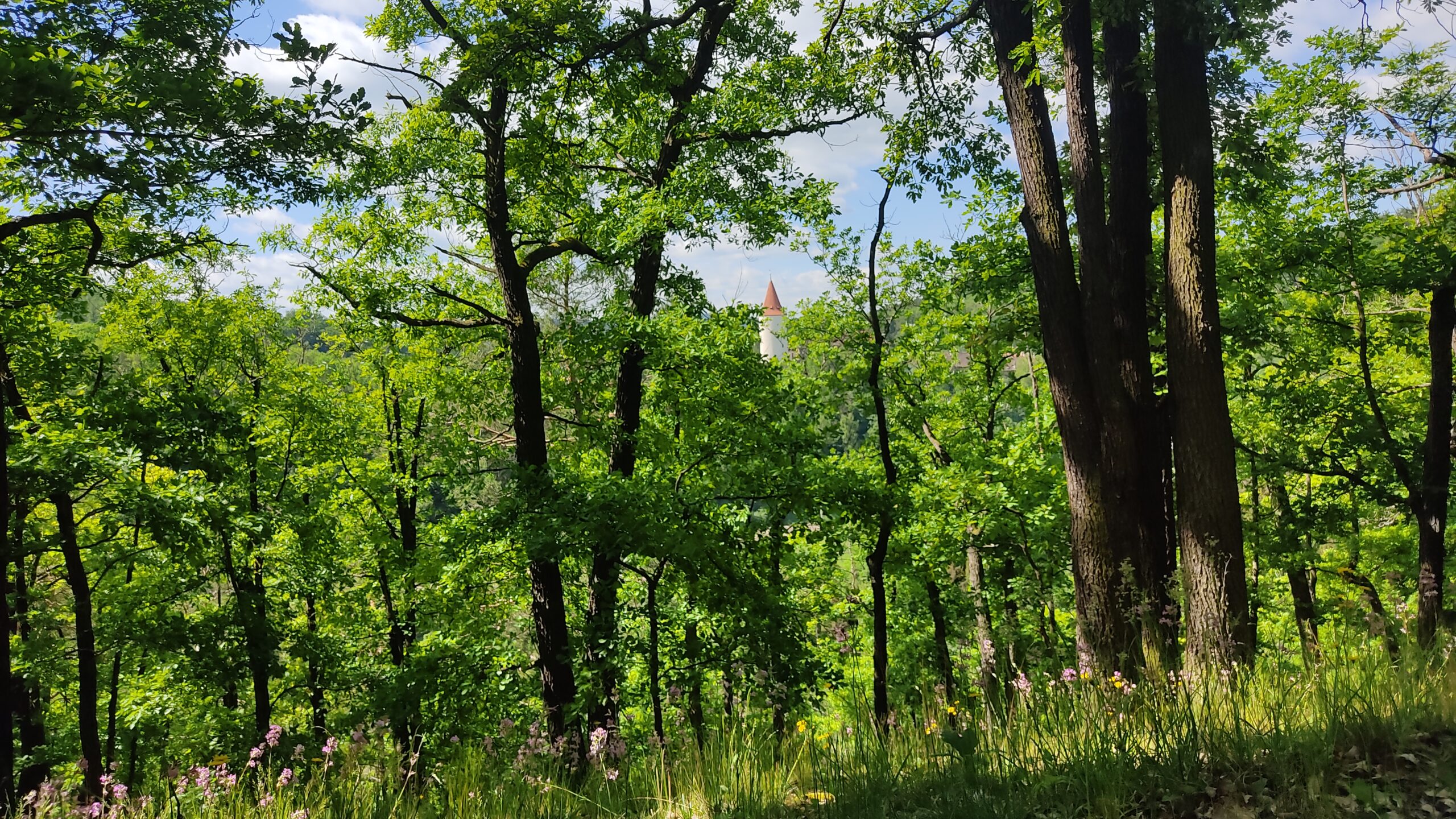The Forest of Crooked Logs
The Forest of Crooked Logs, or simply called Křivoklátsko in Czech, is an ancient forest in the heart of Europe, around fifty kilometers west of Prague. The Forest of Crooked Logs is very diverse from the natural perspective, interwoven with plenty of water streams, warm hills with exposed rocks, cold valleys and rugged ravines. The entire area was considered to be a hunting ground for medieval dukes and kings, that is why there are plenty of castles and castle ruins encircled by the forest or small villages, with the castle of Křivoklát being the most famous and beautiful one. The Forest was important to the first Bohemian rulers with hints that it partly served as a sacred place, with the sanctuary on the hill of Velíz as an example.

Going up to the hill of Jezevčiný at the heart of Křivoklátsko or the Forest. The hilltops called “pleše” with their forest steppes are centers of biodiversity. During the summer, the hilltops are very hot, unlike the cold, forest covered valleys with water streams, that are located just a few hundred meters away below the hills.
Not only Czech, hence Baltoslavic and Central European, tales and customs still resonate within the land, but also those from the time of Celts, who built an oppidum at the edge of the Forest, today named after the village of Stradonice. They also deposited one of the largest treasures ever found in the whole of Iron Age Europe, the treasure of golden coins located close to the village of Podmokly, which again testifies for Křivoklátsko being a sacred area. Near the village of Mšecké Žehrovice, which is located to the north of the Forest, a famous Celtic stone head from a nobleman statue was found buried in the fields. However, in Křivoklátsko, there are also fortified settlements from the Bronze Age and earlier times, the place of the castle of Křivoklát being settled with longer or shorter breaks since the Neolithic times.

The Celtic head from the 3. century BCE found around Mšecké Žehrovice, as shown in National museum at Prague.
There are many interesting folk customs related to the year’s season cycle like putting of sweets on newly green willow branches during the early spring, when parents tell their kids the tale about a fox giving children sweets during the night and putting them on willows. This custom has origins in pagan times, when both the fox and the willow were considered to be a connection to the otherworld, where ancestors, the great grandparents of the children, live after death. The fox had a similar role as singing birds, ravens (also common here), storks, crows, frogs and other animals that were considered to bring souls of children from the otherworld and take care of them. The willow was also connected to fertility, which comes with the spring with the blessings of gods and ancestors from other worlds. In the spring, the willow is one of the first trees to bloom and grow rapidly, next to hazel trees, blackthorns, bird cherries and so on.

I am living in a valley close to the water stream called “Rakovnický potok”. Millions of years ago, there was a big river flowing in the opposite direction, hence the valley covered with woods looks wider and rugged. In summer the valley is mild, unlike the warm hilltops.
The most common types of forest in the region include the oak-hornbeam forests, (limestone) beech forests and the lime-acer wet deciduous broad-leaved forests. Along the streams there are alders, willows, cherries, wild apple trees, birches and so on. There are also important populations of white fir and yew trees, with some spruce monocultures being introduced in the previous hundreds of years. However, in the center of Křivoklátsko and especially around the Misty river, the oak, hornbeam, beech and maple trees dominate. One of the most important ecosystems from the European perspective, located in the Forest of Crooked Logs, are forest steppe areas on exposed hills with rare protected plants, animals and crooked shrub tree trunks that might have given the name to the entire region. These forest steppe places are called “pleše” in the local dialect, while the forest ravines with streams are called “loužky”. Both terms are not familiar to inhabitants of other regions in the Czech Republic because of the scarcity of comparable types of natural phenomena there.
The geology of the region is very old and diverse, hence the geodiversity of the mineral nutrients and climate differences give rise to biodiversity. Most of the rocks here originated in Proterozoic and early Paleozoic about 600 million years in the past. Even though our ancestors, being mostly small farmers, lumberjacks, charcoal-burners and castle servants, surely had some idea and did use local plants for food and remedies, they were mainly dependent on the crops of their small fields and gardens. We know of recipes including lime/linden blossoms, elder blossoms and berries, rosehips, St. John’s wort, wild thyme and other herbs. The most famous old sage women knowing the secrets of herbs came from the villages of Branov, Kublov and Sýkořice.

Beech trees use their branches and smooth trunks to form a streamlet of water during the rain. When the water reaches the ground, the deep roots take it down below to the forest’s groundwater storage.
There are local stories about the dragon named Dýma (meaning “smoke” + suffix “a”), that at one hand kills people during storms, but at the other protects them from bad witchcraft. There is also a tale of a brave peasant maiden Hana, who saved Křivoklátsko from the devastation caused by mercenaries during the anarchic times of “Brandenburgers in Bohemia” in the second half of the 13th century. You see, the Forest of the Crooked Logs is a colorful and rich region (or “kraj” in Czech) and I am very proud to live here. There is a lot of inspiration for writing articles, poems and stories, and for coding new applications and algorithms as well. On top of that, forests can inspire us to solve issues in modern times like the oyster mushroom being able to decompose oil. The strong and healthy land bears strong and healthy people.
There is a whole website that I dedicated to The Forest of Crooked Logs, its natural phenomena, history, folk tales, herbal brews and my own thoughts and stories related to the region. The website is called Křivoklátské směsi (The Brews of the Forest of Crooked Logs) and while most of the content is written purely in Czech, the introductory article is also available in English: https://www.krivoklatskesmesi.cz/the-brews-of-the-forest-of-crooked-logs/


